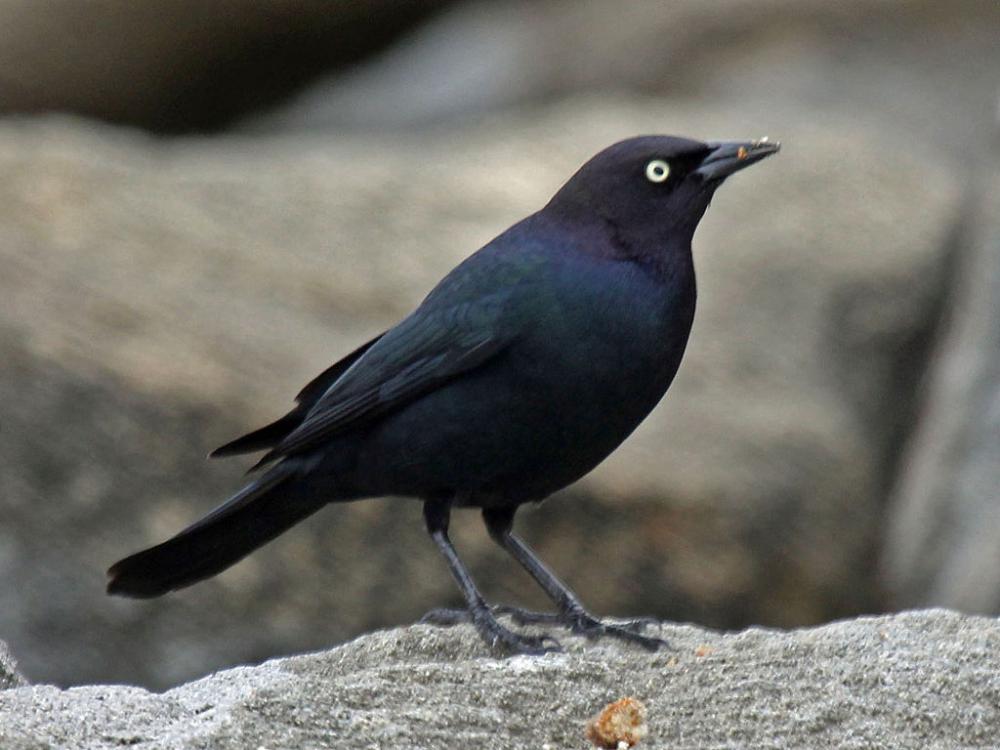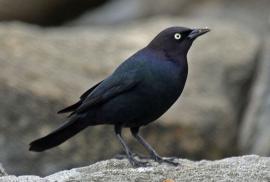Guide to Boreal Birds
Overview
This blackbird, named for 19th-century ornithologist Thomas M. Brewer of Boston, is best known especially in winter as a visitor to stockyards and farms, where it feeds on spilled grain. It also takes insects that are stirred up by livestock and plows. Brewer's Blackbirds nest in hay fields, but the young are usually fledged before the hay is harvested. During breeding season, the male has an elaborate display that includes fluffing out the feathers, making the wing quiver, cocking the tail, and pointing the bill upward. Following man and his cattle, the Brewer's first pushed north into Washington around the turn of the century. Later it traveled northeastward, reaching Wisconsin, and it is still spreading in Ontario, Canada. A very social species, it mixes not only with its own kind but with other species such as the Red-winged Blackbird and the Brown-headed Cowbird.
Description
8-10" (20-25 cm). Robin-sized. Male is solid black with purplish-blue iridescent head and yellow eyes. Female is gray with dark eyes. Similar to Rusty Blackbird, but male Rusty has faint green reflections on head; female Rusty has yellow eyes and jerks its head as it walks.
Voice
Gurgles, squawks, and whistles.
Nesting
3-5 gray eggs, with dark brown spots, in a nest of coarse grass and twigs reinforced with mud and lined with fine grass and hair, placed on the ground or in a tree. Nests in loose colonies of up to 30 pairs.
Habitat
Prairies, fields, and farmyards.
Range/Migration
Breeds from British Columbia, Manitoba, and Ontario south to southern California, New Mexico, and Texas. Winters north to British Columbia and Carolinas.



